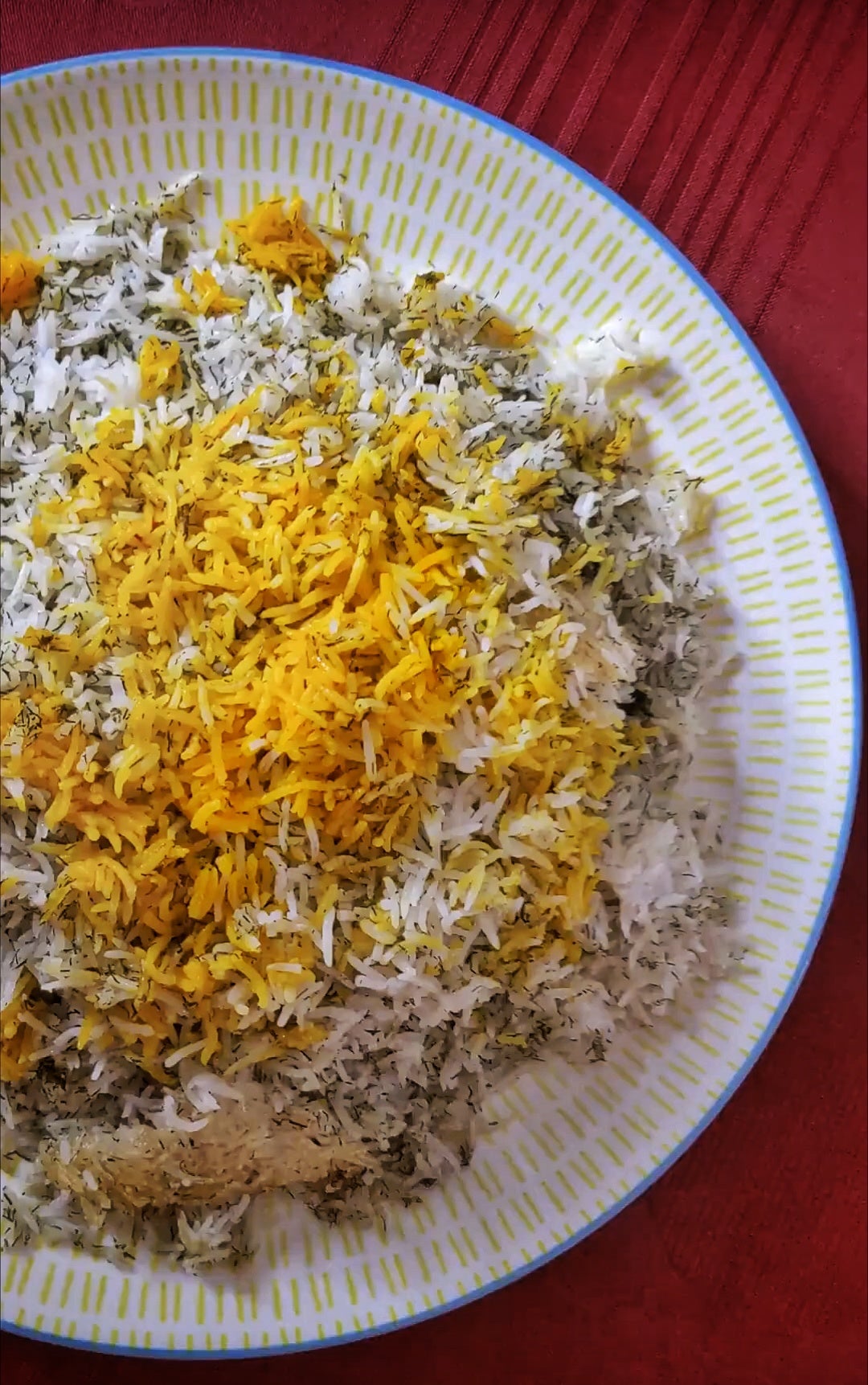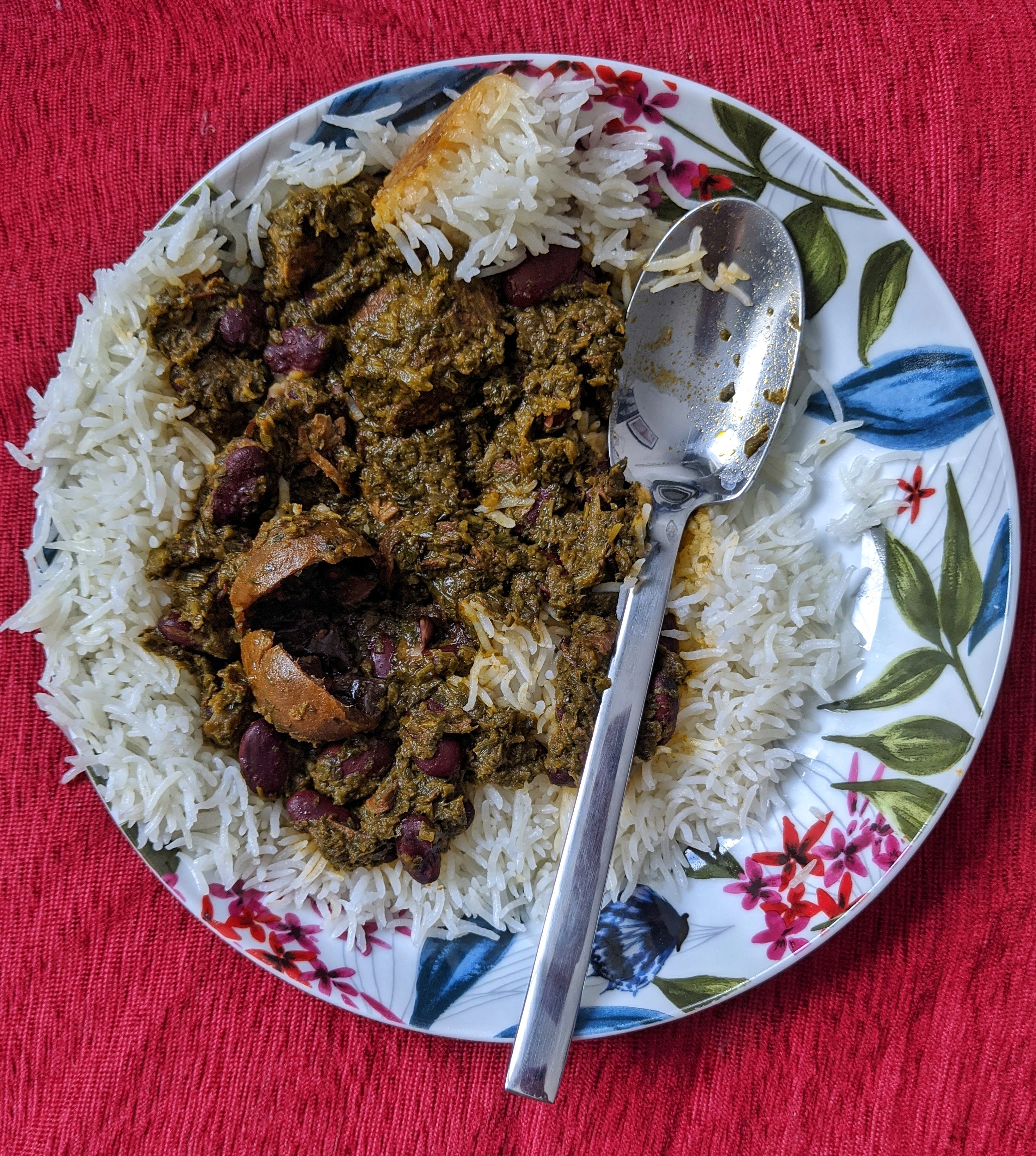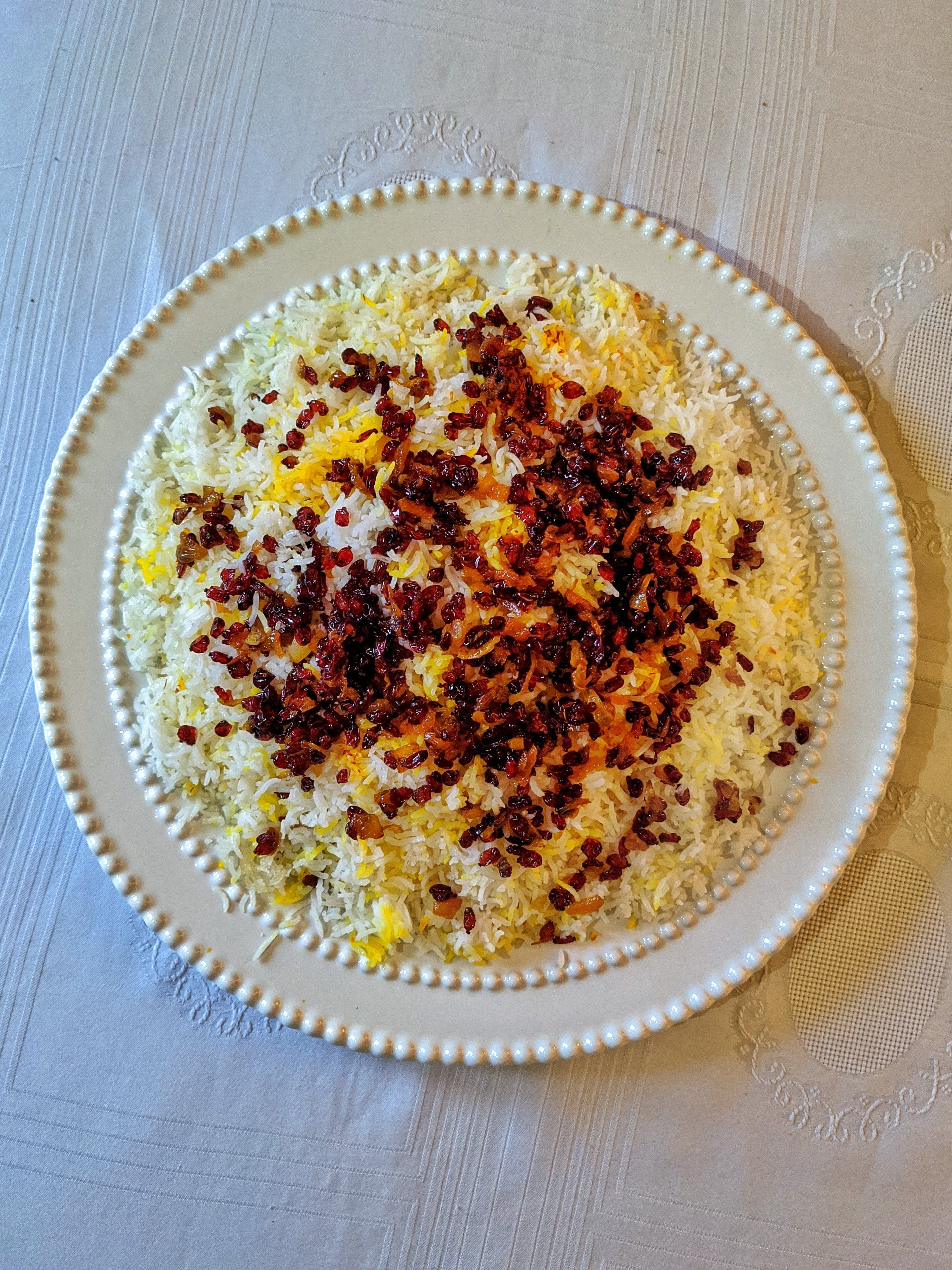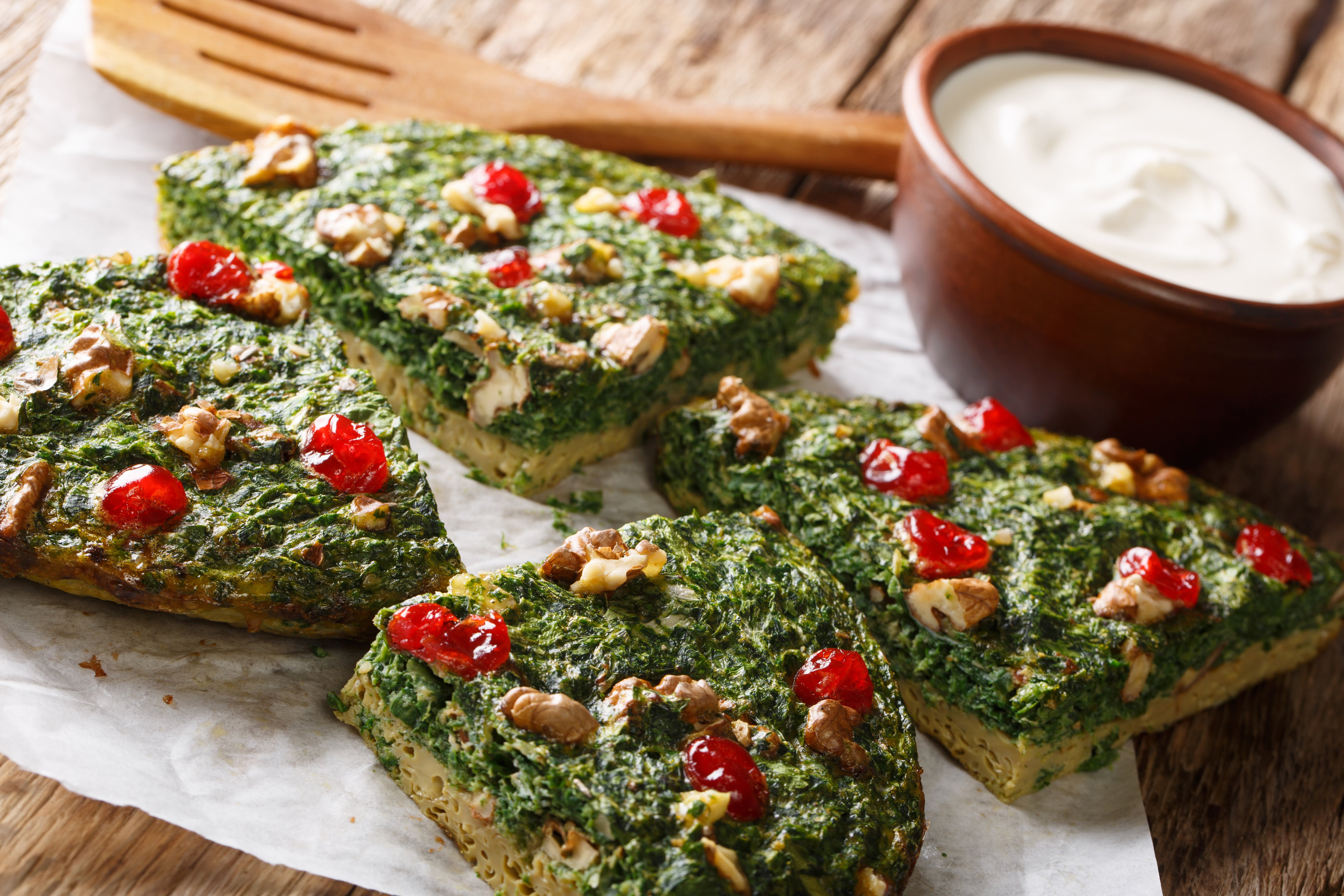
Meaning “new day” in Farsi, Nowruz marks the first day of spring and the start of the new year in Iranian culture. Beginning on the spring equinox, it marks the beginning of Farvardin, the first month of the Solar Hijri calendar.
In addition to traditions such as jumping over the fire for Chaharshanbe Soori and the Haft-sin table spread (featuring seven dishes beginning with the “sin” pronunciation in Farsi, all of which hold symbolic value for the new year), food is a big part of the celebrations.
Sabzi polo ba mahi (herbed rice with fish) is one of the most popular dishes to prepare for the new year festivities, along with other common favourites, all of which use ingredients that represent rebirth and new life for the new year.
If you’re looking to cook your own Persian feast to welcome in the new year - or perhaps you want to try out a few traditional Iranian recipes - these are some of my favourite traditional recipes.
Sabzi polo ba mahi

Sabzi Polo (herbed rice) ba mahi (with fish) is a traditional Persian meal eaten on the first day of Nowruz. The herbs symbolise rebirth and the fish represent life, both of which are key elements of the new year. I usually opt for cod or sea bass but, truthfully, you can use any fish.
Ingredients:
500g basmati rice
8 tbsp oil
4-5 tbsp flour
4 tbsp lemon juice
2 fillets cod/sea bass/salmon (any fish can work)
3 bunches young garlic (alternatively use spring onions or leeks)
3 tbsp salt
2 medium sized potatoes, sliced ½cm
2 eggs
1 bunch spring onions (green parts)
1 bunch fresh dill
1 tbsp dried dill
½ bunch flat parsley
½ bunch coriander
½ tsp turmeric
¼ cup (60ml) water
Saffron, a pinch
Salt and pepper, to taste
Method:
Chop the spring onions, parsley, coriander, fresh dill and either the young garlic.
Soak the rice for at least half an hour (preferably three hours) in lukewarm water.
In a large pan, bring eight to 10 cups (2.4L) of water to the boil.
Add three tablespoons of salt to the pan.
Drain the rice and add it to the boiling salted water.
Cover and boil for eight to 10 minutes or until the rice is soft on the outside.
Once boiled, lower the heat and add the chopped fresh herbs.
Stir and drain the rice and herb mixture.
Heat a separate pot and add five tbsp oil and ¼ cup of water.
Placed the sliced potatoes on the bottom of the pan and add half of the herbed rice mixture.
Add dried dill and young garlic for more fragrance and flavour.
Finish it off with the rest of the rice mixture and put the lid on to cook on a high heat for 10 minutes.
Lower the heat and cook for a further 30-40 minutes.
Grind the saffron using a pestle and mortar and mix in 1 tsp of hot water.
Take ½ cup of the cooked rice and mix with the saffron. Scoop saffron rice on top of the remaining cooked white rice.
Wash the fish and dry with a kitchen towel
Combine the flour, turmeric, salt and pepper in a bowl and cover the fish in the mixture.
Beat the eggs and cover the flour-coated fish fillets in the egg mixture.
Heat 3 tablespoons of oil in a pan and when hot, add the fish. Fry either side until golden (a few minutes each side).
Pour lemon juice over fish for extra flavour.
Ghormeh sabzi

Ghormeh sabzi is a Persian stew made of braised lamb and mixed herbs. A great way to consume your vegetable quota for the day, the dish is typically served on top of white basmati rice. Although ghormeh sabzi is a popular dish in Iranian cuisine, it is traditionally eaten during Nowruz due to the prominence of herbs in the meal, which represent rebirth.
Ingredients:
500ml water
Half leg of lamb, diced
4 dried Persian limes
2 tbsp tomate purée
½tbsp turmeric
½ tbsp of advieh (Persian spice mix of turmeric, cardamom, cumin, cinnamon, coriander, pepper cloves, dried rose petals)
Mix of dried ghormeh sabzi herbs (find online or at Iranian supermarkets) OR a mix of 4 bunches of parsley, 1 bunch of coriander, 4 spring onions (green parts only), 1 tbsp of dried fenugreek
½ tsp salt
½ tsp pepper
¼ tsp ground saffron
250g kidney beans
3-4 tbsp sunflower/olive oil
Method:
Fry onions in some oil until translucent.
Add the meat and fry for 3-4 minutes.
Sprinkle some turmeric, advieh, salt and pepper onto the meat.
Add your tomato purée and continue to fry for a further 2-3 minutes.
Add water and bring to the boil.
Add saffron and then let it all simmer for an hour.
Halfway through, pierce your dried limes with a fork and add to the meat.
Add your kidney beans to the pot.
Add your sabzi mix (all the greens) and cook/simmer for another half an hour.
Check on the water in your stew (you want a balanced level of thickness to your stew).
When ready (your preferred thickness), remove from hob and serve with white rice.
Zereshk polo ba morgh

A popular party dish in Persian cuisine, it’s no wonder zereshk polo (rice with barberries) makes an appearance for the new year celebrations. I cook mine with chicken but if you’re looking to make this dish vegan, there’s enough flavours going on in this dish to satisfy non-meat eaters too.
Ingredients:
4-5 chicken thighs/breast
500ml water
4 cups basmati rice
4 tbsp olive oil
4 cups of water
1 onion
1 tbsp turmeric
Large handful zereshk (dried barberries)
A pinch of ground saffron
Salt and pepper, to taste
Method:
Fry the chicken in a pot with the sliced onions and turmeric in oil.
Add water and bring to boil, then allow chicken to simmer for about an hour. You can add a tiny bit of saffron (less than a pinch) to the pot as it boils.
While the chicken is cooking, wash your rice and pour it into a Persian rice cooker, along with four tbsp of oil, four cups of water and salt to taste.
Adjust your tahdig setting on the rice cooker and leave it until the dial has gone back to the beginning (about 40 mins).
Dice the onion and add to a pan on low heat.
Add your zereshk to the same pan and sauté on a low heat for a couple of minutes.
Layer your zereshk/fried onion mix into your cooked rice.
Grind a few strands of saffron and mix with water to drizzle over your rice to give it colour.
Serve your zereshk polo with the chicken on the side.
Reshteh polo
Reshteh polo is a noodle rice dish typically served for Persian New Year. Served in the evening of Nowruz, it is believed that the consumption of this dish allows you to grab hold of your destiny for the upcoming new year. Reshteh noodles can be found in most Middle Eastern supermarkets – though if you’re struggling, look at using alternatives for the dish..
Ingredients:
500g basmati rice
5 tbsp oil
85-100g reshteh noodles
3 tbsp salt
2 medium sized potatoes, sliced ½cm
¼ cup (60ml) water
Saffron, a pinch
Salt and pepper, to taste
Method:
Soak the rice for at least half an hour (preferably three hours) in lukewarm water.
In a large pan, bring eight to 10 cups (1.9-2.4L) of water to the boil.
Add three tablespoons o salt to the pan.
Drain the rice and add it to the boiling salted water.
Cover and boil for eight to 10 minutes or until the rice is soft on the outside.
Once boiled, lower the heat and add your reshteh noodles.
Stir and drain the rice and noodle mixture.
Heat a separate pot and add five tbsp oil and ¼cup of water.
Placed the sliced potatoes on the bottom of the pan and add half of the rice and noodle mixture.
Finish it off with the rest of the rice mixture and put the lid on to cook on a high heat for 10 minutes.
Lower the heat and cook for a further 30-40 minutes.
Grind the saffron using a pestle and mortar and mix in 1 teaspoon of hot water.
Take 1/2 cup of the cooked rice and mix with the saffron. Scoop saffron rice on top of the remaining cooked white rice.
Serve with lightly toasted/fried barberries (optional).
Kuku sabzi

A herbed omelette dish, kuku sabzi is traditionally served on the first day of spring and Persian new year. Once again, it is a typical dish for Nowruz because of the herbs symbolising rebirth, while the eggs represent fertility or new life. Completely vegetarian, this dish is filled with enough herbs and greens to tick your five a day off the list too. If you’re looking to use up more leftover fresh herbs and leaves in your kitchen, there’s no harm in adding spinach and other greens too (though they are not the traditionally included).
Ingredients:
300g flat leaf parsley
300g spring onions (green parts) or chives
200g coriander
5 eggs
2 lettuces
2 tbsp turmeric
2 tbsp walnuts, chopped
1 tbsp barberries
1 tbsp flour
13 tbsp oil (of choice)
Salt and pepper, to taste
Method:
Wash and chop the herbs and leave to drain completely.
Fry in five tbsp oil for five minutes and then leave to cool down.
Beat the eggs and add flour, turmeric, berries, walnuts, salt and pepper to the mix.
Add the herbs to the mixture and mix well.
Pour four tbsp oil in the frying pan and once hot, add the mixture.
Flatten the mixture using a spatula.
Cover the pan with its lid and let it cook for 10 minutes.
Flip ‘omelette’ over in the pan.
Add 3-4 more tbsp of oil to the pan for the other side to cook and become golden. Allow to cook for a further 10 minutes (no need for lid).
Cut kuku into segments and serve with traditional Persian bread (sangak or lavash) or any type of flatbread; mast-o khiar (yoghurt with cucumber) and ‘torshi' (pickled vegetables).







